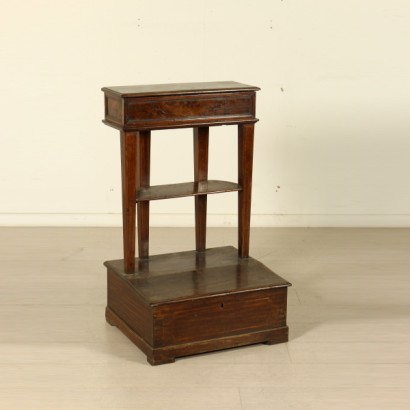Neoclassical Kneeler
Features
Style: Neo-Classical (1765-1790)
Age: 19th Century / 1801 - 1900
Year: Terzo quarto dell'800
Origin: Italy
Main essence: Walnut
Material: Walnut Burl Slab , Solid Walnut
Description
Knee pad with flap doors. Lifted straight from a truncated pyramidal uprights linked by shelf. Body with Burl veneered drawer. Threads.
Product Condition:
Requires small restoration and resumption of polishing.
Dimensions (cm):
Height: 90
Width: 55
Depth: 21
Additional Information
Style: Neo-Classical (1765-1790)
This historical period includes a first phase that can be properly defined as the Louis XVI style.nOnly at a later time, with the maturation of archaeological fashions, was a new vision of furnishing civilization formulated and codified, now fully attributable to the Neoclassical Style.
In fact, both trends coexisted in unison until the last years of the eighteenth century.
nIn the field of cabinet making, the Directoire, Retour d'Egypte, Consular and Empire styles also fall within the neoclassical era.
nFind out more about Neoclassicism with the insights from our blog...
n






















